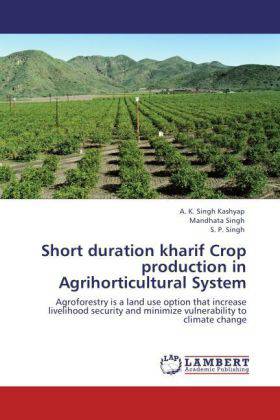
- Afhalen na 1 uur in een winkel met voorraad
- Gratis thuislevering in België vanaf € 30
- Ruim aanbod met 7 miljoen producten
- Afhalen na 1 uur in een winkel met voorraad
- Gratis thuislevering in België vanaf € 30
- Ruim aanbod met 7 miljoen producten
Zoeken
Short duration kharif Crop production in Agrihorticultural System
Agroforestry is a land use option that increase livelihood security and minimize vulnerability to climate change
A. K. Singh Kashyap, Mandhata Singh, S. P. Singh
Paperback | Engels
€ 62,45
+ 124 punten
Omschrijving
Pressure on the land resources will increase significantly in the next few decades while the land available for food supply will continue to decline in per capita terms. The food, fodder and fuel production in developing countries will have to be increased by 60% in the next 25 years to meet the needs of growing population. Thus, efforts be made to increase productivity of agricultural land by advocating agroforestry as one of the most practical way of meeting the needs. Agroforestry systems are often claimed to be superior to agricultural systems because of their ability to contribute to sustained production of crops and also play a promising role for environmental consideration. Fruit tree based agroforestry involves intentional and simultaneous association of annual or perennial crops with perennial fruit-producing trees on the same land unit. The relatively short juvenile (pre-production) phase of fruit trees, high market value of products and the contribution of fruits to household dietary needs, fruit-tree-based agroforestry enjoys high popularity among producers worldwide.
Specificaties
Betrokkenen
- Auteur(s):
- Uitgeverij:
Inhoud
- Aantal bladzijden:
- 96
- Taal:
- Engels
Eigenschappen
- Productcode (EAN):
- 9783847334729
- Verschijningsdatum:
- 18/01/2012
- Uitvoering:
- Paperback
- Afmetingen:
- 152 mm x 229 mm
- Gewicht:
- 150 g

Alleen bij Standaard Boekhandel
+ 124 punten op je klantenkaart van Standaard Boekhandel
Beoordelingen
We publiceren alleen reviews die voldoen aan de voorwaarden voor reviews. Bekijk onze voorwaarden voor reviews.








